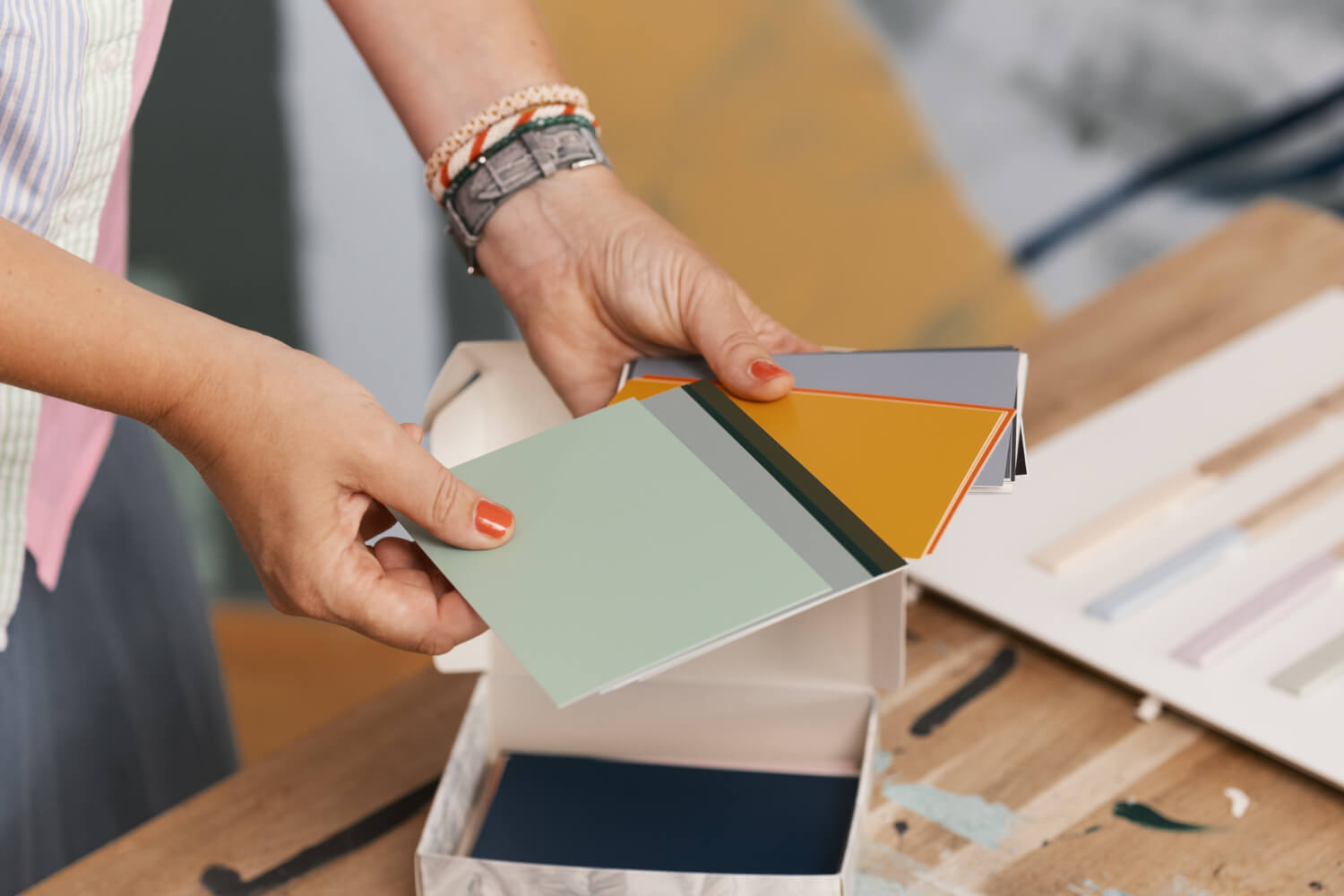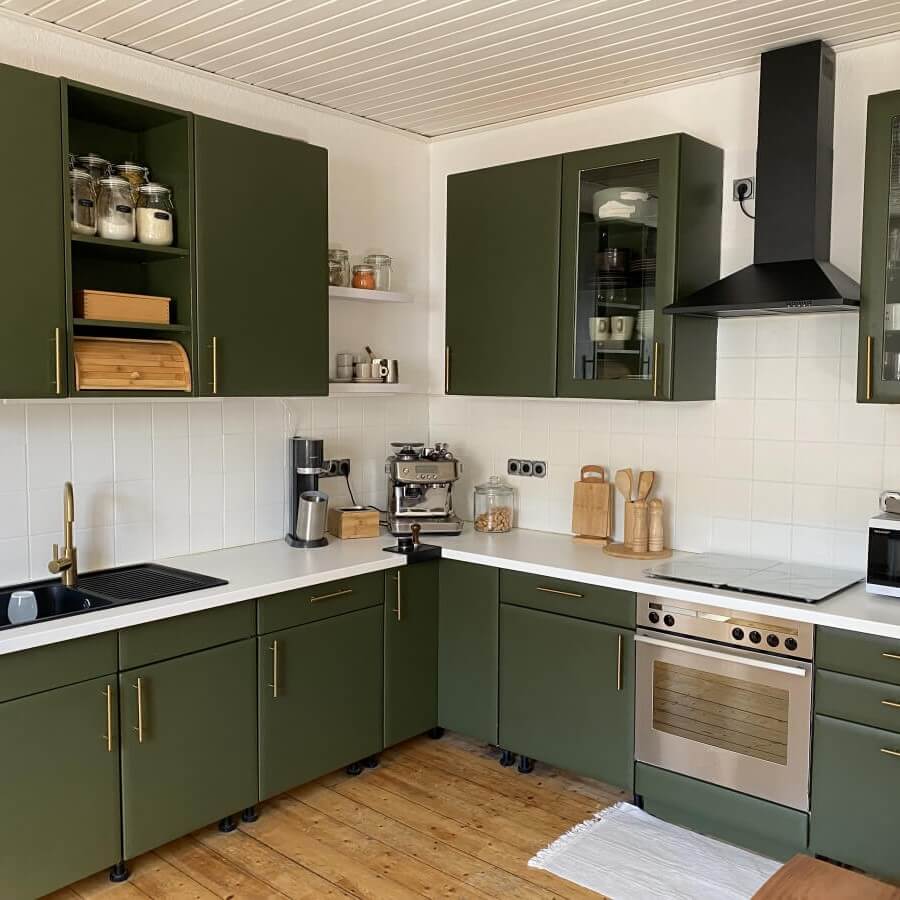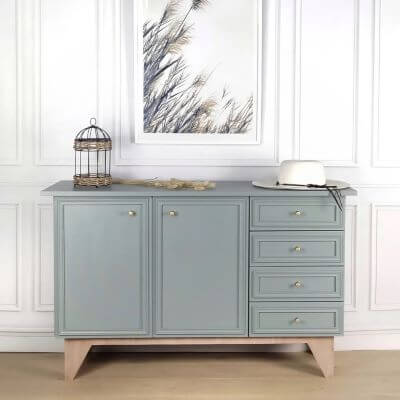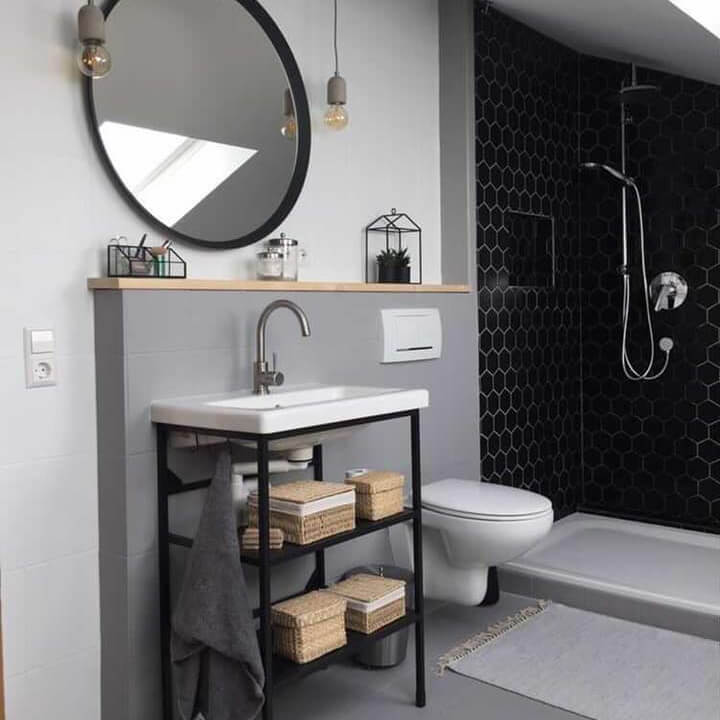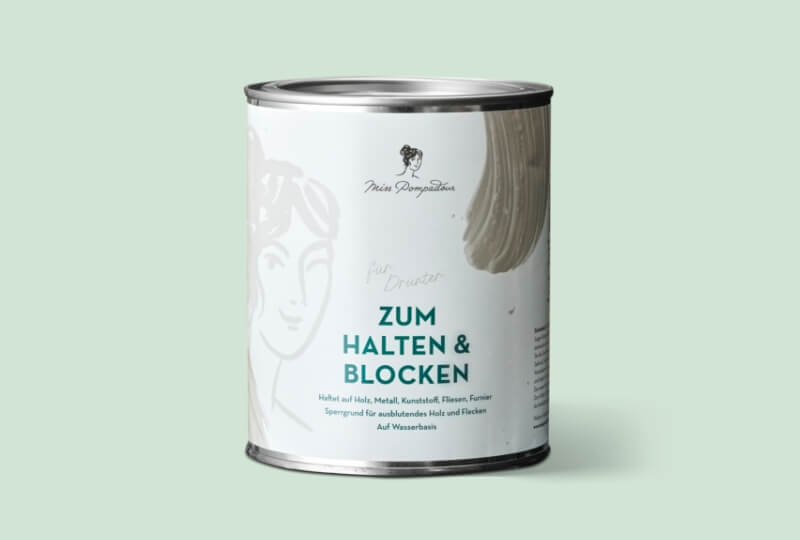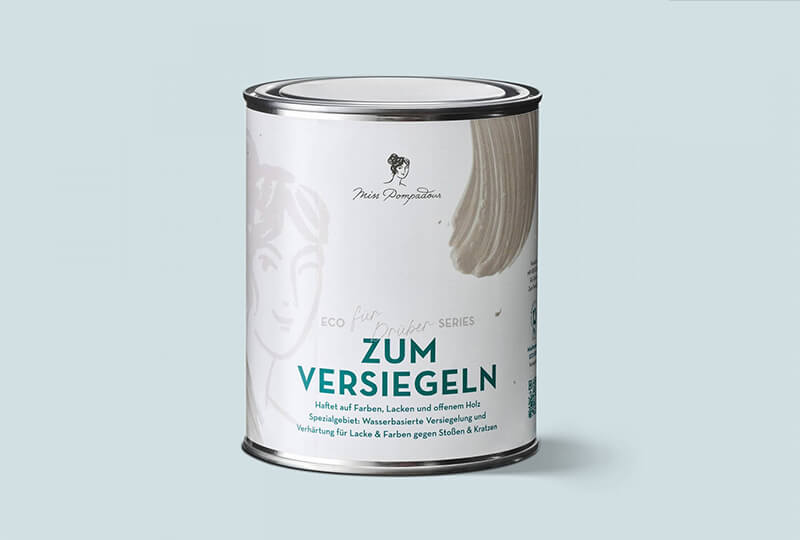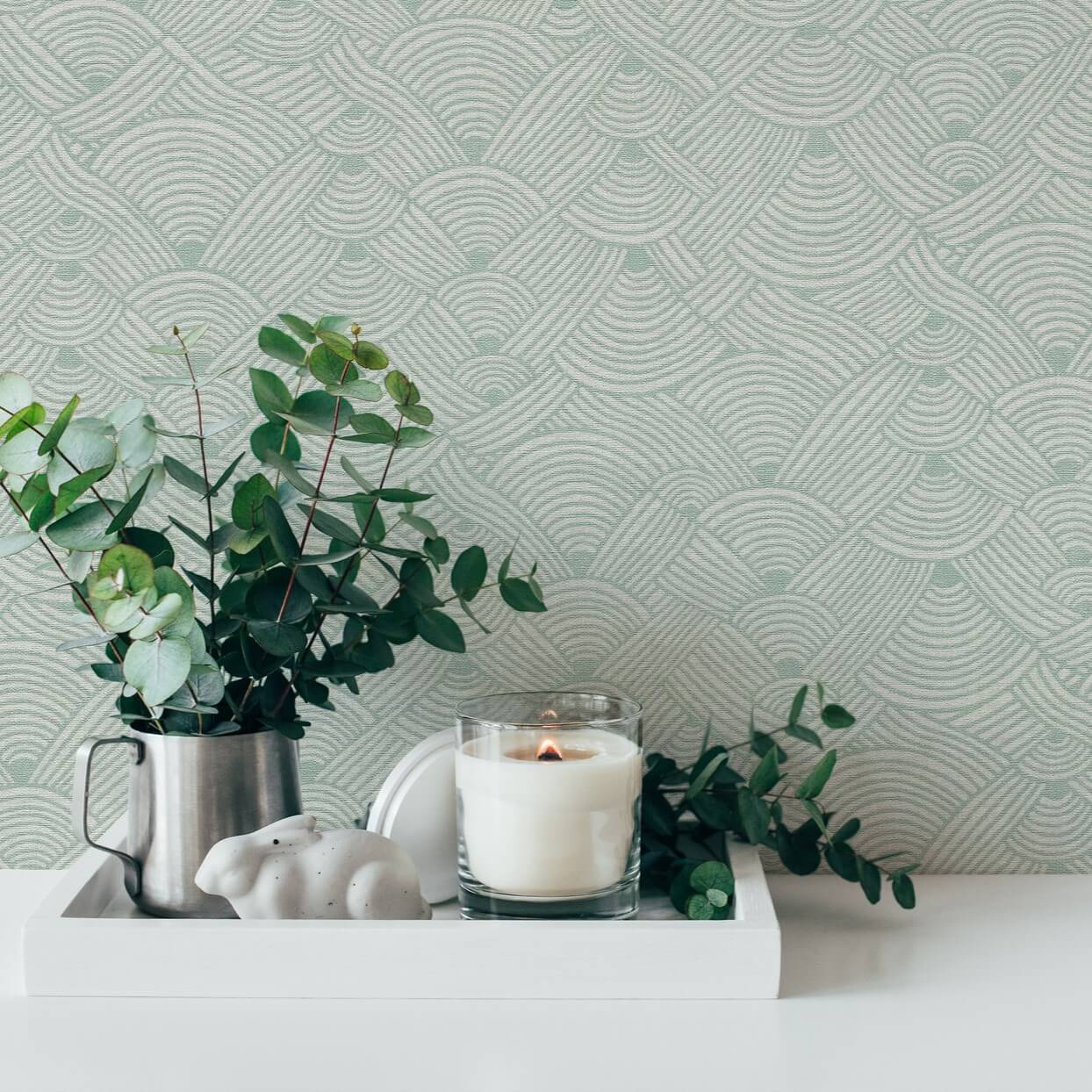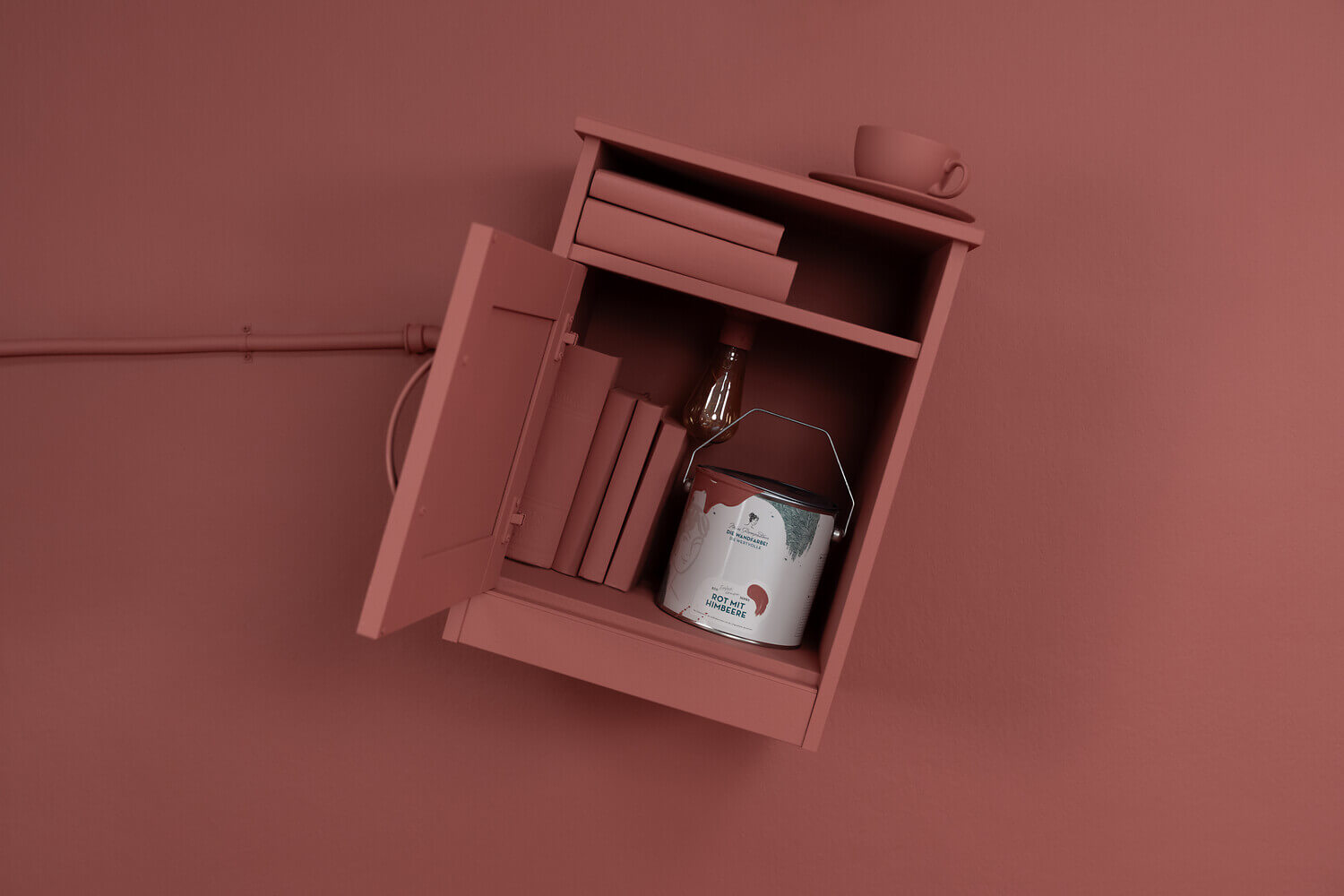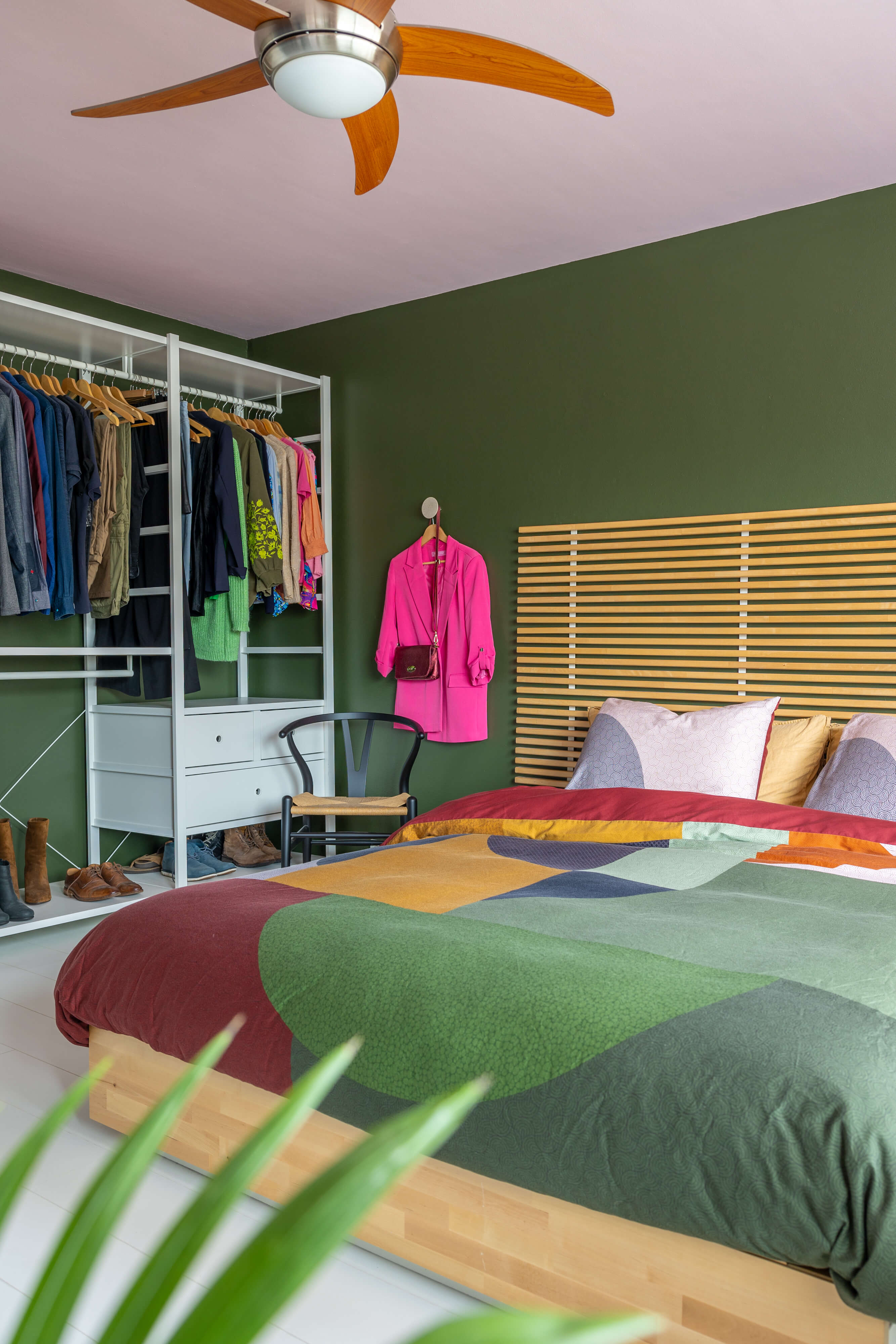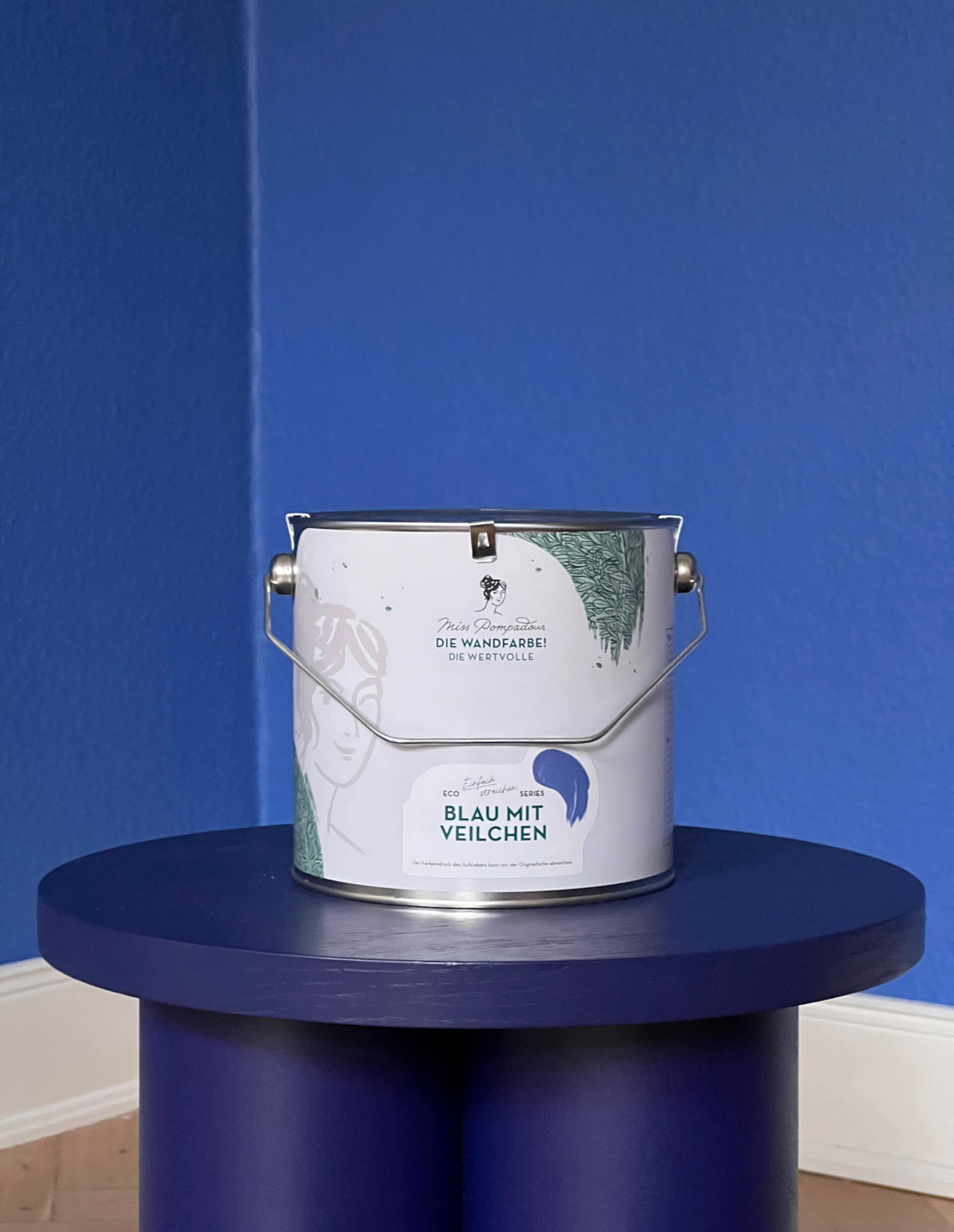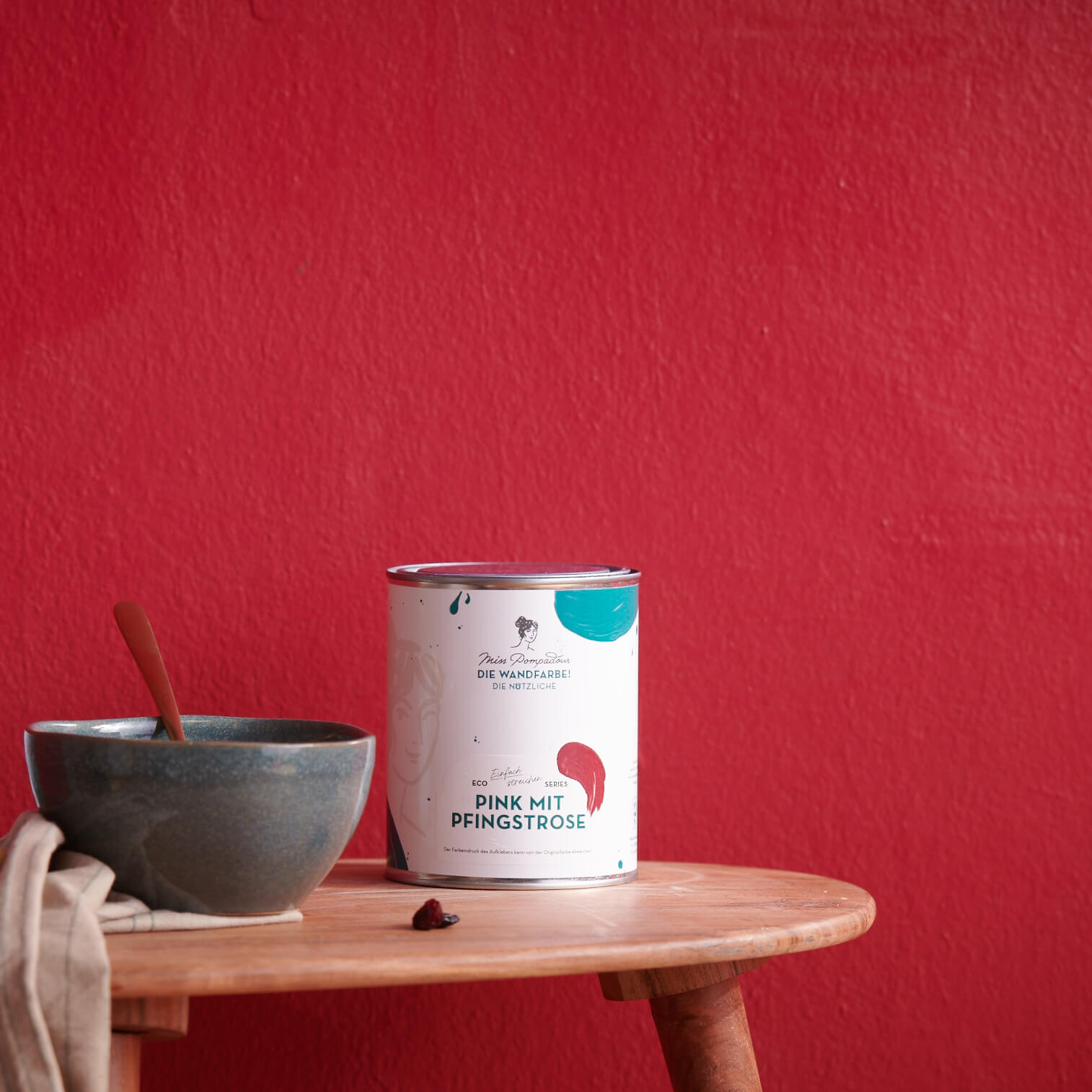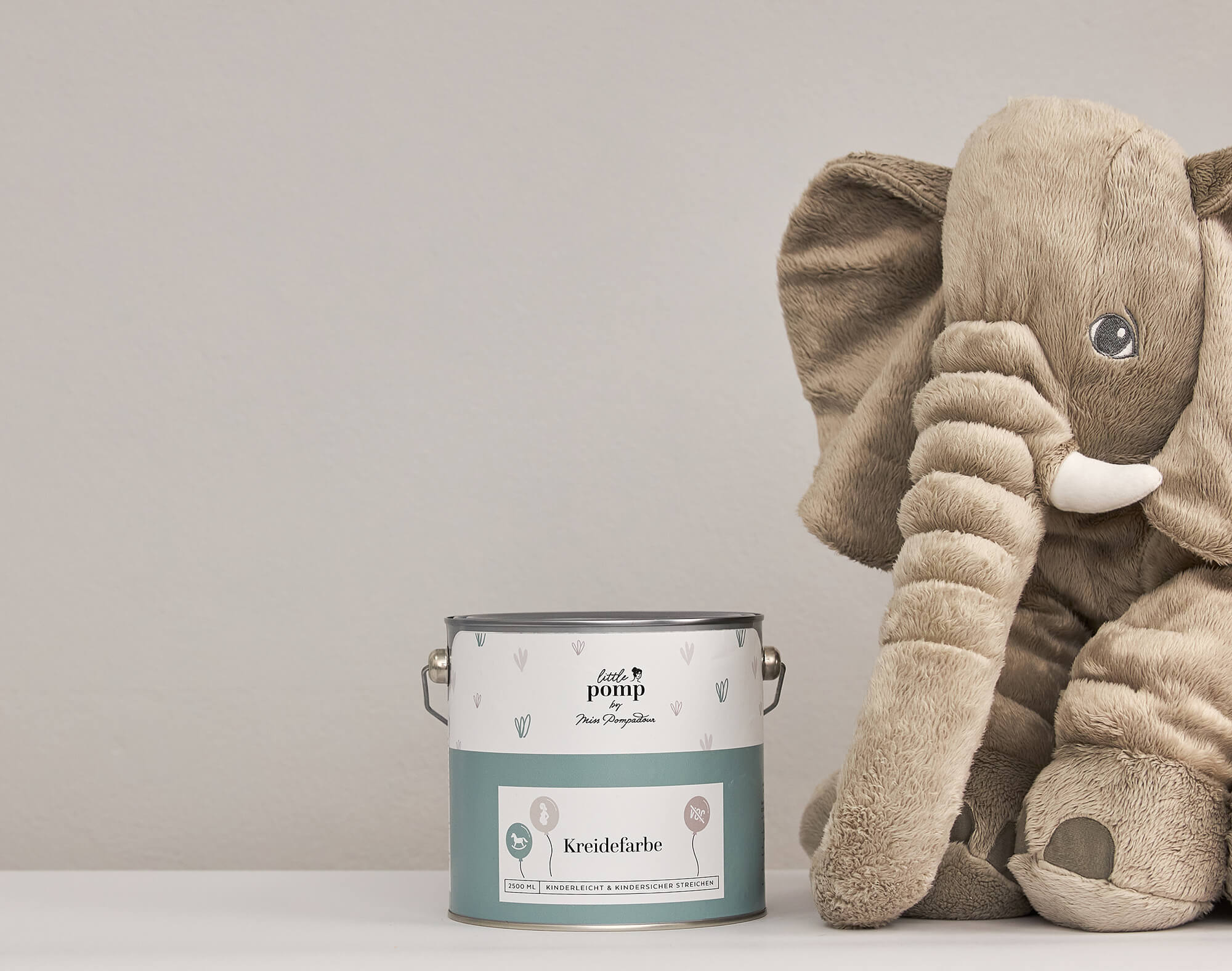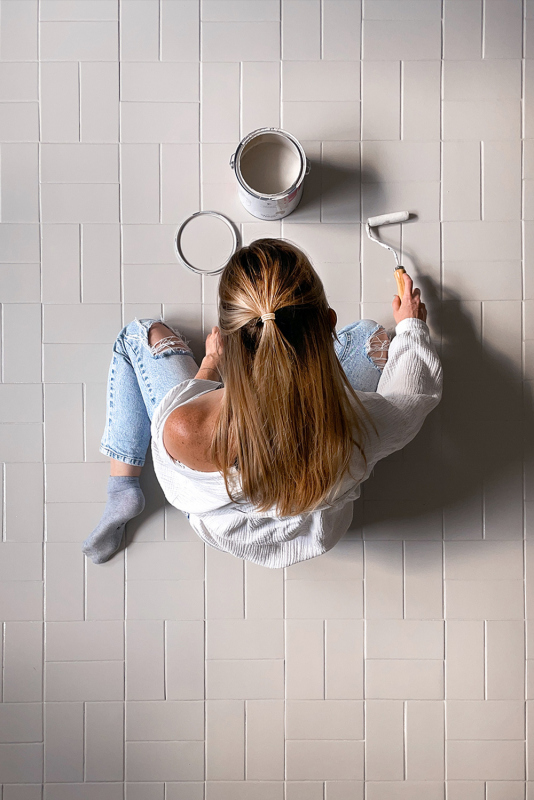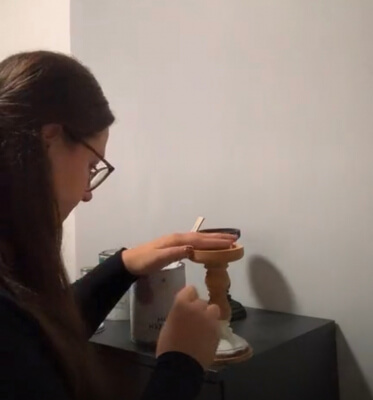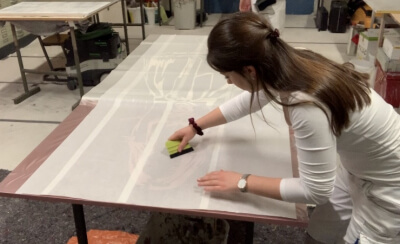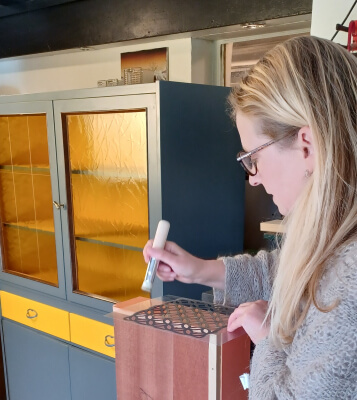What is silicate paint?
4 min reading time
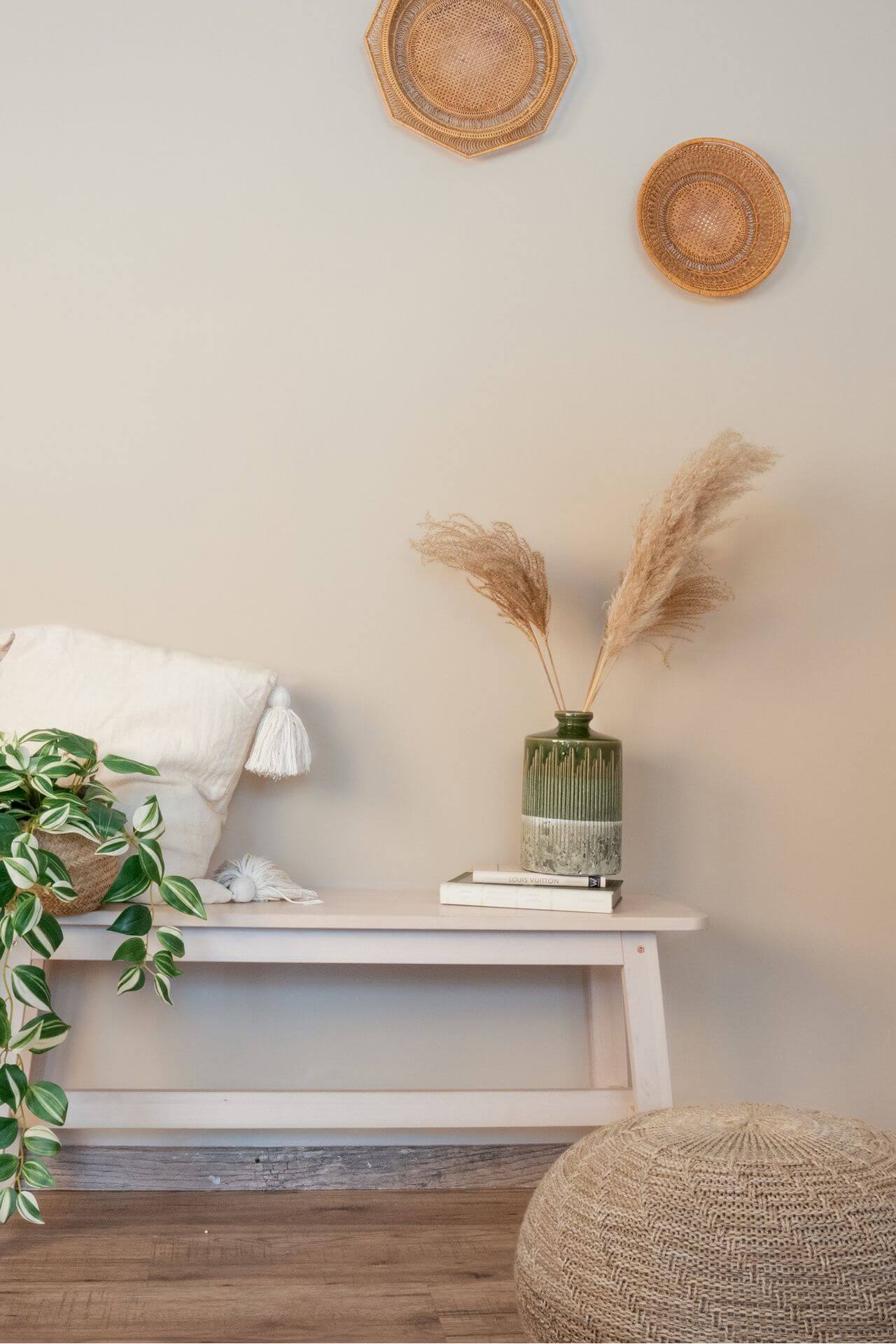
When it comes to environmentally friendly painting, the term "silicate paint" comes up again and again. What actually is silicate paint and what are the advantages and disadvantages of these paints?
What silicate paint consists of
Silicate paint is a mineral paint. All mineral paints for interior or exterior use contain mineral binders as ingredients. Traditionally, one mineral binder was lime. Silicate (potassium silicate or potassium silicate) is another inorganic binder. Both lime and silicate are water-soluble, which is why no further solvents are required.
Pure silicate paint is a two-component paint, usually in white. It bonds insolubly with the substrate and is therefore weatherproof and durable. This process is called "silicification". Pure silicate paint is used for façades and in the preservation of historical monuments, among other things. It does not fade and is extremely UV-resistant, but should only be applied by a specialist as it is highly alkaline and therefore irritating.
Most shops do not sell pure silicate paint, but the simpler dispersion silicate paints and sol-silicate paints, which are mixed ready for use and therefore only consist of 1 component. A maximum of 5 % binder is added here to make the paint easier to use. In addition, by using different pigments, more colour shades are possible than with pure silicate paint, which is usually only available in white. Special primers for silicate paint are also available on the market.
Advantages & disadvantages: Silicate paint as wall paints
The production of pure silicate paint is very environmentally friendly. It does not contain any ingredients such as preservatives, solvents or plasticisers. This makes it particularly allergy-friendly. However, a small proportion of these substances is added to the dispersion silicate paints available on the market. The water vapour permeability of silicate paint corresponds to that of the substrate. This means that the paint allows moisture to escape from the wall to the outside. Mould growth is also prevented in this way. The paint is applied with a trowel rather than a roller. A brush is only used in corners and angles.
The major disadvantage of silicate paint is that silicate paints are highly corrosive alkalis in their liquid state. Protective clothing, eye and respiratory protection must therefore be worn when painting. You should leave the painting of pure silicate paint to a professional. Paint splashes and smudges, e.g. on window panes, are also annoying as they are almost impossible to remove. Careful masking is therefore an absolute must!
Easier-to-apply emulsion paints are therefore usually the first choice, especially indoors. These include MissPompadour wall paints. You can find out more about the properties and benefits of emulsion paints in our emulsion paints blog.
MissPompadour Paints are not silicate paints, but water-based emulsion paints. This makes them very easy to use.
Application tips: Using silicate paint indoors and outdoors
Silicate paints can be used not only as façade paints, but also indoors. Silicate paint is particularly suitable as a wall paint in slightly damp basements, as it allows moisture to escape from the wall. Silicate paint in the bathroom can also be an advantage.
When is silicate paint suitable indoors?
Silicate paint is a good choice for painting directly onto mineral plaster, such as lime and cement plaster, or concrete. It forms an inseparable bond with the substrate. However, silicate paint should not be used on gypsum plaster or gypsum plasterboard, as in this case an undesirable reaction of the paint with the substrate takes place and cracks can occur. After curing, silicate paint forms a diffusion-open, resistant, ecologically compatible wall coating that is harmless to health. This is particularly beneficial for allergy sufferers
When is silicate paint suitable for exterior use?
Silicate paints are very well suited as exterior facade paints, as they are both durable and particularly resistant to algae and mould. In addition, exterior silicate paint is highly UV-stable. These properties of silicate paints guarantee a long-lasting façade.
Frequently asked questions about silicate paint
Here you will find answers to frequently asked questions.
How long does the mineral paint have to dry?
It is best to follow the manufacturer's instructions
Silicate paint: disadvantages in application?
The biggest disadvantage of silicate paint as a wall paint is that it is not safe to work with, as silicate paint is corrosive when wet. In addition, mineral paint cannot be used indoors on old paintwork and wallpaper such as woodchip, as it has to bond directly to a mineral substrate. Gypsum plaster or plasterboard are also unsuitable for painting. Silicate paint must also be applied very quickly, as it can only be applied wet on wet. Silicate paint can be painted over with emulsion paint. To prepare the substrate for this, you need a deep primer for emulsion paint. Conversely, however, emulsion paint cannot be painted over with silicate paint, as silicate paint requires a mineral substrate for bonding
How long does silicate paint last?
Silicate paint bonds with its substrate and is therefore extremely durable. Pure silicate paint can last for centuries
What should I look out for when buying mineral paint?
Most shops do not sell pure silicate paints, but dispersion silicate paints. These combine the advantages of pure silicate paints and emulsion paints. In addition, by using different pigments, more colour shades are possible than with pure silicate paint, which is usually only available in white. Special primers for silicate paint are also available on the market
Tip: Prevent mould with silicate paint
As silicate paint is alkaline, fungi and algae have no chance of developing either inside or outside. The paint is also open to diffusion so that moisture cannot build up in the wall. Silicate paint reliably prevents any mould growth. The advantages of silicate paint against mould are particularly beneficial in rooms that often have high humidity, such as cellars and laundry rooms in old houses. Silicate paint can also provide good service in bathrooms without windows thanks to its special properties.
Overview: All tips for painting with silicate paint
- Only use silicate emulsion paint with good protective equipment.
- Remember that silicate paints and dispersion silicate paints are always freshly mixed and you can therefore never remix the same colour shade.
- Only use silicate paint on mineral substrates such as plaster or concrete.
- MissPompadour Paints are not silicate paints. You cannot buy silicate paint from us either. However, you can easily paint over your silicate paint with MissPompadour Paints.
- MissPompadour Paints are also open to diffusion and allow your walls to breathe

